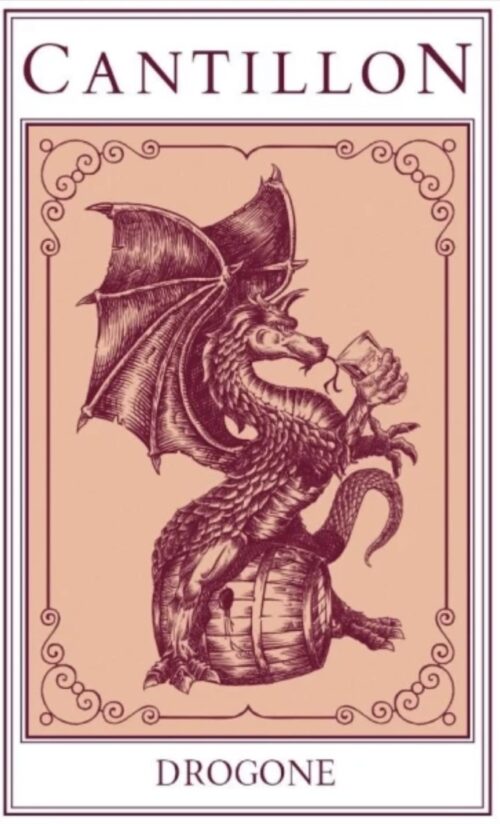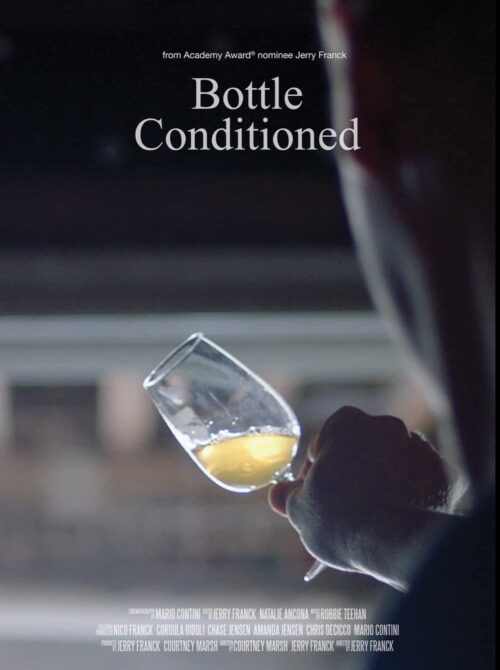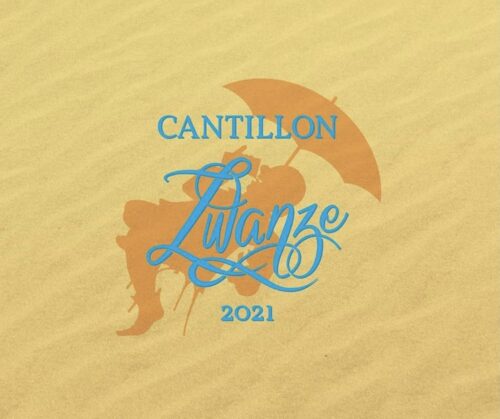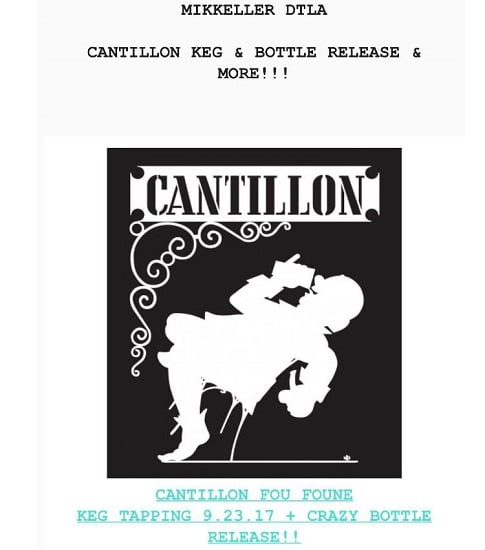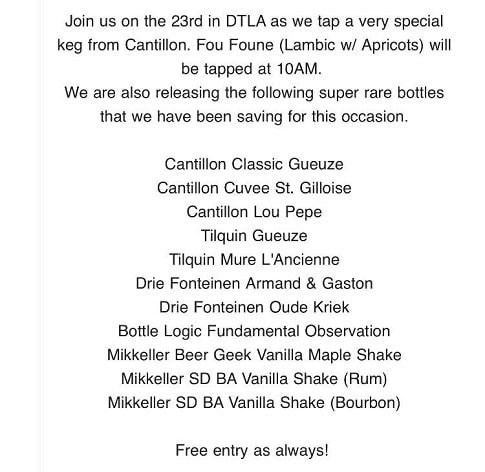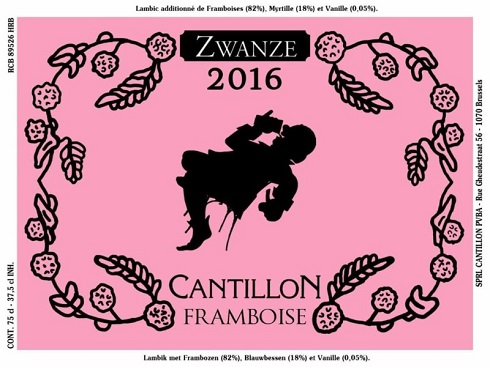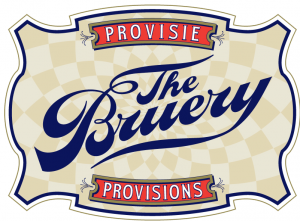From the Wall Street Journal
Tracking an Ancient Belgian Beer
Lambic, a rare, sour brew, uses techniques dating back to man’s first beer. Reporter Charles Forelle visits one of the few remaining breweries
BRUSSELS — Beer is usually not a morning pursuit.
But it was still dark one day last month when I lumbered out of bed and over to the tiny Cantillon brewery, located in a scruffy neighborhood not far from the main train station here.
Industrial brewers can be as secretive as defense contractors — good luck getting inside the mashing room of Diageo PLC’s Guinness brewery in Dublin — but a couple of times a year Cantillon opens its doors to the public.
I had risen early because I wanted to see how to brew lambic, a Belgian specialty so retro its origins go back thousands of years. The early-morning start was necessary because there are no refrigerated tanks or cryogenic chillers at Cantillon; the boiled liquid that will become beer cools in the open air, and it needs a whole, cold night to do so. Thus all the mixing, cooking, filtering and boiling must be completed well before sunset.
Lambic brewing is “a process that has become so rare around the world, but that was once the universal method of making beer,” says Jean-Pierre Van Roy, the patriarch of the family that has owned and run Cantillon for a century. “As with everything rare, we need to be watchful, we need to be able to show this type of industry to our generation and future generations.”
Take sips of two dozen different beers and the lambic will be the one you remember. A traditional lambic is startlingly sour, like plain yogurt, and full of musty and meaty flavors.
Lambic is brewed only in Brussels and a few towns on the city’s western edge — and only a dozen breweries make it. Cantillon makes around 32,000 gallons a year; Anheuser-Busch InBev pumps out more than 1.3 billion gallons of Bud Light annually. Bottles are easy to find in Brussels, but it’s likely to take a committed search anywhere else. (See sidebar, below, on where to find it.)
All beer starts out roughly the same: Some sort of grain is cooked in water to turn its starches to sugar. The brewer then adds yeast to turn the sugars to alcohol.
Brewers of lambic skip that last step. At Cantillon, the cooked grain-broth — wort, it’s called — is pumped up to the attic, then dumped into a giant, copper tub beneath the eaves that looks like a children’s splashing pool. It cools there overnight, picking up the wild yeasts and bacteria floating in the Brussels air.
This is the same method the first human to concoct beer most likely used thousands of years ago. Like true sourdough bread and natural yogurt, lambic is resolutely pre-industrial and is fermented with whatever bugs happen to be nearby.
Belgian scientists have deconstructed lambic and found scores of different species of micro-flora. Two important types are lactic-acid bacteria, which make lambic sour, and yeasts of the genus Brettanomyces, among them B. bruxellensis, which give lambic its characteristic aroma. “Horse blanket” is the term favored by beer cognoscenti. This is not a terribly useful olfactory cue for those of us who dwell in cities, but the scent is of hay and must — and also of something very much alive. It is a weird concept for beer, no doubt, but strangely compelling and astoundingly complex. Needless to say, sour mustiness is a tough sell — don’t look for commercials of sweaty young things dancing to reggaeton and taking swigs from bottles of lambic.
“People have a taste for anything, but their palates have been deformed,” Mr. Van Roy says. “Industrial producers get people used to eating and drinking in a certain way. And when you explain to people what the product is, when you let them taste it, they come to realize that this sourness we have in our products is really a popular taste.”
To at least a small slice of beer fans, it is.
Despite the early hour, professional brewers on a pilgrimage, home brewers with a sense of curiosity and a throng of committed drinkers mingled over croissants and coffee at the Cantillon brewery. The coffee was weak, and by 9 a.m. or so most everyone switched over to beer.
There is nothing modern about Cantillon — no blinking lights or beeping electronic temperature monitors. Barrels are steamed clean by hand in a low-ceilinged, Dickensian basement. A system of flywheels, belts and gears powers what needs powering and turns what needs turning.
The mash-tun — the heart of the brewery, where wheat and barley are mixed and cooked — is a 19th-century model in heavy iron. To fill it, a worker one floor up shovels grain down a chute.
Lambic brewing as done at Cantillon would drive the bean-counters of a big brewery mad. Cantillon can brew only in the colder months, when the weather is right; the brewery gets in about 20 working days a year — if the weather turns suddenly warm, a batch can be spoiled. Most of the product sits in inventory for years before being sold, and the long aging in wooden casks means about a third of what’s brewed is lost to evaporation — the “angel’s share,” as it’s known.
“The angels of Brussels are great gourmands,” the elder Mr. Van Roy says, standing in the attic amid sacks of grain, an orange scarf knotted at his throat.
“The big brewers can’t work like us,” he says. “It’s impossible. They have staff and other expenses.” At Cantillon, “there are no directors or administrators. There’s a father, a mother, children and now grandchildren.”
Around mid-day, Jean Van Roy starts drawing tumblers of wort from the mash-tun, passing around samples in plastic cups. It is warm and sweet. Eventually he is satisfied, and he pulls more levers to begin pumping the liquid upstairs into vats for boiling.
A few hours later, he deems the boiling complete. Visitors crowd up to the attic, clambering on creaky wood stairs for a glimpse of the cooling pool. The wort gushes in, and they give a cheer. Soon the whole, chilly room fills with a warm, beery haze.
Only a few more years, and you could drink it.
What to Drink
Lambic refers generally to sour beers of the Brussels region fermented with wild yeasts. Gueuze is a blend of old and young lambics. Fruit flavorings are common — Kriek is lambic brewed with cherries; framboise, with raspberries.
But a word of caution: Many larger brewers of lambic — and, particularly, kriek — add sugar or fruit syrup to the finished product to appeal to those put off by lambic’s sourness. Beer snobs recoil in horror at this practice. Truth be told, the bigger problem is that the underlying beers tend to be thin and cheaply made. But even good lambics are flattened by sugar. My advice: Avoid. Some breweries will label their unsweetened bottles oude (old, in Dutch). Mort Subite Oude Gueuze is an unsweetened lambic; Mort Subite Gueuze is sweetened.
Cantillon’s beers are uncompromisingly sour, but they reward the patient drinker with deep and perplexing flavor — there are notes of lemon and must and wood and hay. The fruit beers are bracingly tart.
Other names to look for: Girardin (1882, black label); Boon (Mariage Parfait); De Cam (Oude Gueuze); Drie Fonteinen (anything, frankly).
Where to Drink It
Brasserie Cantillon
Rue Gheude 56
+32 2 521 49 28
The Van Roy family will show you around; tours are €5 and include a drink. The current line of beers is sold at excellent prices; we paid around €44 for an assortment of six 750-milliliter bottles that included some rare varieties. If you are looking to take a few bottles home in your suitcase, you could do far worse than the Grand Cru. It is a three-year-old lambic that can age for another 30. Public brewing days are announced periodically; see www.cantillon.be.
Le Bier Circus
Rue de L’Enseignement 57
+32 2 218 00 34
The lighting is too bright and the decor too kooky for this sedate bar — with attached restaurant — to be intimate. But you don’t come here for romance; you come for beer. The list is full of lambics, including old vintages and rare bottlings. Beyond lambics, there are dozens of well-chosen Belgians in a variety of styles. (Try anything from De Dolle Brouwers or Brasserie Ellezelloise, to pick two among many worthy producers.)
Chez Moeder Lambic
Rue de Savoie 68
+32 2 544 16 99
A serious beer bar that doesn’t take itself too seriously. It is out of the city center, in the branché commune of St. Gilles. On a warm night in summer, when the hazy light lingers past 10 p.m., take the 3 or 4 tram from downtown and find a chair outside. The bar is tucked behind the St. Gilles town hall, a delightfully over-the-top Neo-Renaissance castle. Excellent selection of lambics, including some Cantillon beers on tap.
In ‘t Spinnekopke
Place du Jardin aux Fleurs 1
+32 2 511 86 95
Excellent renditions of Belgian classics (waterzooi, carbonnade, rabbit braised in kriek) anchored around food that is cooked with beer. Boulettes à la gueuze — meatballs in a rich gueuze sauce — takes the cake. It has dark and cozy rooms of an old house; in nice weather, there’s a pleasant terrace outside.
Overseas:
Traditional lambics are exported in fairly small quantity. Shelton Brothers imports Cantillon and Drie Fonteinen to the U.S.; see www.sheltonbrothers.com for distribution. Availability can be spotty — several places we called were out of the beers. Prices vary widely, but expect to pay $14 to $20 for a 750-milliliter bottle of Cantillon’s gueuze, and generally more for the more unusual varieties.
